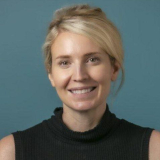Andy Grove, who took Intel to the upper reaches of the technology world, was part of the impetus for two panel discussions Monday at the University City Science Center on how best to use federal government-funded research to spur public-private innovation and create jobs on a large scale.
"The underlying problem isn't simply lower Asian costs," Grove wrote in a 2010 Bloomberg Businessweek story. "It's our own misplaced faith in the power of start-ups to create U.S. jobs."
Grove's comments, some of which were read to the gathering of health care, education, and technology professionals, pointed to the need and challenge of transforming a start-up into a job-generating industry.
The panels were moderated by Quentin Palfrey of the White House Office of Science and Technology and Patricia Buckley of the Commerce Department.
The ghost of Steve Jobs, recently deceased founder of Apple Inc., hung in the air.
Four of the six panelists had an academic or health-care component to their resumés, including Zev Scherl, a partner in the venture capital firm New Spring Ventures. He urged students and educators to ignore the fact that Jobs dropped out of college and to get as much education as possible, including liberal arts courses, but to have part of the learning be entrepreneurial. Echoing Grove, Scherl urged scientific-oriented people hoping for success to focus less on an exit-strategy - meaning being bought out by a bigger company - and more on building a business.
Philadelphia has "a lot of educated young talent," Scherl said. "We don't have the breadth of talent that you might have in Silicon Valley when it comes to experienced entrepreneurs."
Glen Gaulton, executive vice dean and chief scientific officer at the University of Pennsylvania's Perelman School of Medicine, said better targeting of incentives will help any cause, including the federal government's recent efforts to shift from a fee-for-service model to one that aims for better outcomes for patients at lower cost.
"Innovation will be the driver, not just of breakthrough cures, but in cost savings," U.S. Sen. Bob Casey (D., Pa.) said in an interview between the panels. The much-debated Affordable Care Act, Casey said, has many of those cost-saving, outcome-oriented components. Because some will not be seen until the plan is fully implemented in 2014 and 2015, he says he understands why some people and companies have been unenthusiastic.
When implementation shows something does not work, it needs to be fixed or scrapped. Some corporations object because they might get less from the government, but Casey said he hoped others would see opportunity. He also pointed to the innovative approaches by the Geisinger Health System of Danville, Pa., a physician-led system that serves 270,000 members in 43 counties, and has won many awards for better outcomes and lower costs.
"I would hope that corporate entities would look at where there have been savings and better outcomes, and Geisinger is a good example," Casey said. "Two of the big drivers of cost are how you manage chronic diseases and problem of hospital re-admissions. Geisinger is one of several health systems that has shown you can do those things."
